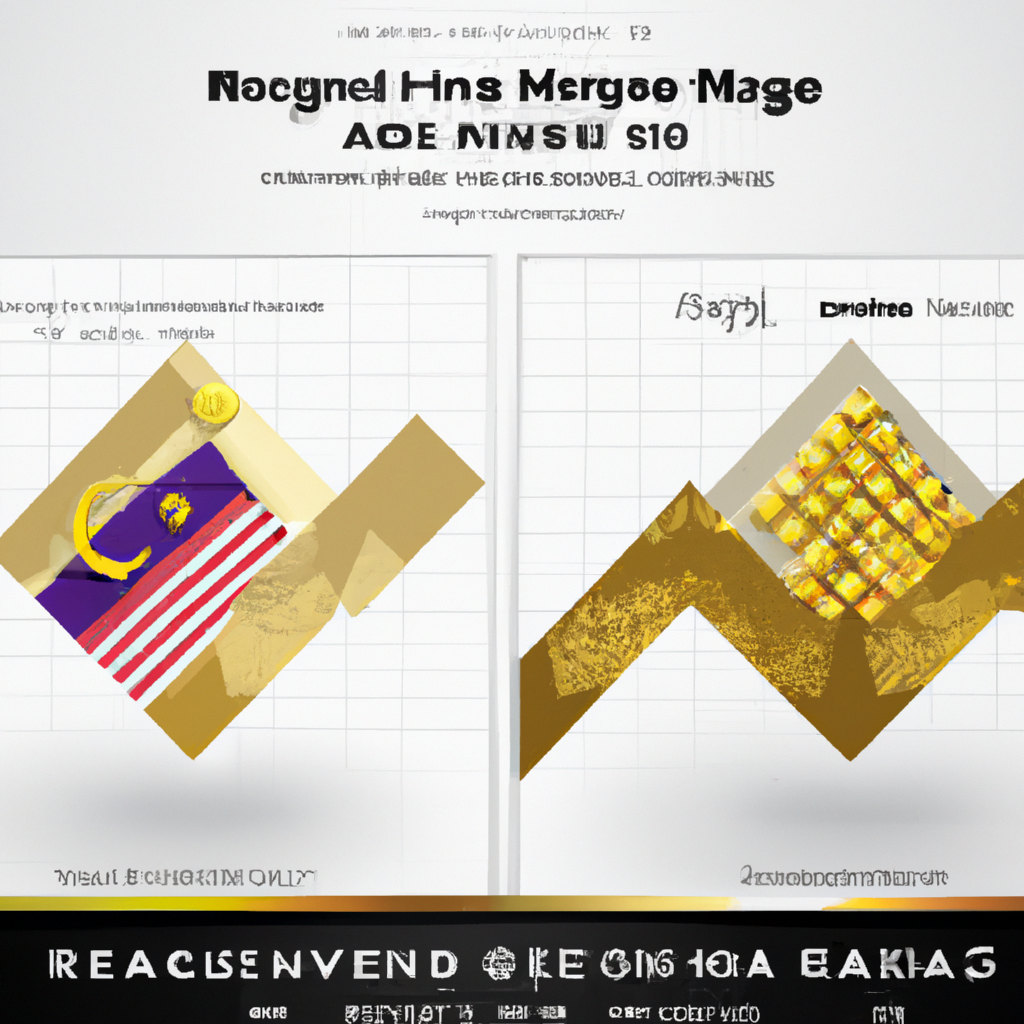Curious about the relationship between the Ringgit exchange rate and gold prices in Malaysia? Look no further! In this article, we’ll explore the fascinating connection between these two factors and delve into the various factors that can influence gold prices in the country. Whether you’re an avid investor or simply interested in understanding the dynamics of the market, this article will provide you with valuable insights into how the fluctuations in the Ringgit exchange rate can impact the price of gold in Malaysia. So, let’s dive in and uncover the secrets behind this intriguing relationship!
Economic Factors that Influence Gold Prices
Global Economic Trends
Global economic trends play a significant role in influencing gold prices. When the global economy is experiencing growth and stability, investors tend to favor riskier assets such as stocks and bonds, leading to a decrease in demand for gold. Conversely, during periods of economic uncertainty and instability, investors seek the safe haven qualities of gold, causing its price to rise. Therefore, fluctuations in global economic conditions have a direct impact on the demand and, consequently, the price of gold.
Interest Rates
Interest rates also have a strong influence on gold prices. When interest rates are low, borrowing becomes cheaper, encouraging investors to invest in riskier assets like stocks and bonds. This reduces the demand for gold as a safe haven asset, leading to lower gold prices. On the other hand, when interest rates are high, borrowing becomes more expensive, making gold more attractive as a store of value. As a result, the demand for gold increases, driving its price up.
Inflation
Inflation is another crucial economic factor that affects gold prices. Gold is often considered a hedge against inflation because its value tends to rise when the purchasing power of fiat currencies decreases. As inflation erodes the value of paper money, investors turn to gold as a way to preserve their wealth. This increased demand for gold during inflationary periods leads to higher gold prices.
Currency Exchange Rates
Currency exchange rates play a significant role in determining gold prices, especially in countries like Malaysia where gold is traded in local currency, the Ringgit. When the Ringgit weakens against major foreign currencies, the price of gold in Ringgit terms tends to rise. This is because a weaker currency means it takes more Ringgit to purchase an ounce of gold, leading to higher prices. Conversely, when the Ringgit strengthens against foreign currencies, the price of gold in Ringgit terms tends to decrease.
Understanding the Ringgit Exchange Rate
Factors Affecting the Ringgit
Several factors influence the exchange rate of the Ringgit. These factors include interest rates, foreign investment flows, political stability, economic performance, and government policies. Interest rate differentials between Malaysia and other countries can attract or repel foreign capital, impacting the supply and demand for the Ringgit. Additionally, political stability and economic performance can influence investor confidence in the Malaysian economy, affecting the exchange rate.
Floating Exchange Rate System
Malaysia operates under a floating exchange rate system, where the value of the Ringgit is determined by market forces. This means that the exchange rate is not fixed and can fluctuate based on the supply and demand for the currency in the foreign exchange market. As a result, the Ringgit’s value can change in response to economic factors, making it vulnerable to fluctuations in global currency markets.
Relationship between Ringgit and Other Currencies
The exchange rate of the Ringgit is influenced by its relationship with other currencies, especially those of major trading partners. A strengthening or weakening of these currencies can impact the relative value of the Ringgit. For example, if the US Dollar strengthens against the Malaysian Ringgit, it would take more Ringgit to purchase the same amount of US Dollars. This would result in a depreciation of the Ringgit and potentially higher gold prices in Ringgit terms.

The Relationship between Currency Exchange Rates and Gold Prices
Currency as a Safe Haven Asset
Gold and currencies are often viewed as competing safe haven assets during times of economic uncertainty. While currency is a traditional safe haven, gold also serves as a store of value and a hedge against inflation. During periods of economic turmoil or geopolitical tensions, investors tend to flock to both gold and safe currencies, affecting their respective prices.
Inverse Relationship between Currency and Gold
There is generally an inverse relationship between the currency exchange rate and the price of gold. When the value of a currency falls, the price of gold denominated in that currency tends to rise. This is because it takes more units of the weakened currency to purchase an ounce of gold. On the other hand, when the value of a currency strengthens, the price of gold in that currency tends to decrease.
Demand for Gold in Foreign Currency
Changes in currency exchange rates can also impact the demand for gold. When a country’s currency weakens, its citizens may seek to purchase gold as a safe haven to protect their wealth. This increased demand for gold can further drive up its price. Similarly, a strengthening currency can reduce the demand for gold as an investment, leading to a decline in gold prices.
Historical Analysis of the Ringgit Exchange Rate and Gold Prices
Impact of the Asian Financial Crisis
The Asian Financial Crisis of 1997 had a significant impact on the Ringgit exchange rate and gold prices in Malaysia. During this period, the Ringgit experienced a sharp depreciation against major currencies, causing the price of gold in Ringgit terms to increase significantly. The economic uncertainty and investor flight to safe haven assets like gold contributed to its price surge during the crisis.
Effect of Political Events on the Ringgit and Gold
Political events can also have a substantial impact on the Ringgit exchange rate and gold prices. For instance, during times of political instability or uncertainty, the Ringgit often weakens as investors become cautious. This depreciation of the Ringgit can result in higher gold prices in Ringgit terms. Similarly, political events that enhance investor confidence can lead to a strengthening of the Ringgit and potentially lower gold prices.
Global Economic Downturns
Global economic downturns, such as the 2008 financial crisis and the COVID-19 pandemic, have a profound effect on the Ringgit exchange rate and gold prices. During these periods, investors seek safer assets like gold, leading to an increase in its demand and price. The Ringgit, often influenced by global economic conditions, can experience depreciation, further boosting gold prices in Ringgit terms.

Recent Trends: Ringgit Exchange Rate and Gold Prices
Effects of COVID-19 Pandemic
The COVID-19 pandemic has had a significant impact on both the Ringgit exchange rate and gold prices. As the pandemic caused economic uncertainty and market volatility, investors turned to safe haven assets like gold, resulting in its price surge. At the same time, the Ringgit experienced depreciation due to the economic fallout caused by the pandemic, leading to higher gold prices in Ringgit terms.
Government Policies and Monetary Measures
Government policies and monetary measures implemented during economic crises can also influence the Ringgit exchange rate and gold prices. Central banks often intervene in currency markets to stabilize their currencies, which can impact the exchange rate. Additionally, fiscal stimulus packages and monetary easing measures can affect investor sentiment and potentially influence gold prices.
Foreign Investments and Capital Flows
Foreign investments and capital flows play a crucial role in the exchange rate of the Ringgit and, consequently, gold prices in Malaysia. Inflows of foreign capital can strengthen the Ringgit, making gold relatively cheaper in Ringgit terms. Conversely, outflows of foreign capital can weaken the Ringgit, driving up gold prices. Therefore, investor sentiment and the movement of foreign investment can impact the Ringgit-gold price relationship.
Role of Speculators in the Ringgit-Gold Price Relationship
Speculation in Currency Market
Speculators in the currency market can influence the Ringgit exchange rate and indirectly impact gold prices. Currency speculators engage in buying and selling currencies with the aim of making a profit from fluctuations in exchange rates. Their activities can influence market sentiment and create volatility, which can impact the Ringgit-gold price relationship.
Impact on Gold Prices
Speculative activity in the currency market can create demand or supply shocks that spill over into the gold market. If speculators engage in large-scale buying or selling of the Ringgit, it can affect the relative value of the currency and, consequently, the price of gold. Therefore, speculators’ actions in the currency market can indirectly influence gold prices in Malaysia.
Risks and Benefits of Speculation
Speculation in currency and gold markets can offer both risks and benefits. On one hand, speculative activity can increase market liquidity and efficiency. It can also provide opportunities for arbitrage and price discovery. However, excessive speculation can lead to market volatility and destabilize exchange rates and asset prices. Therefore, it is essential to strike a balance and ensure that speculative activities do not distort the Ringgit-gold price relationship.
Implications for Gold Investors in Malaysia
Hedging against Currency Fluctuations
Gold can serve as a hedge against currency fluctuations for Malaysian investors. As the Ringgit’s value fluctuates, holding gold can help preserve wealth and mitigate the impact of currency devaluation. By diversifying their portfolios with gold, investors can reduce their exposure to exchange rate risk and potentially benefit from periods of Ringgit depreciation.
Diversification and Risk Management
Including gold in a diversified portfolio can contribute to risk management for Malaysian investors. Gold’s low correlation with other asset classes makes it an effective diversification tool. During periods of market volatility or economic downturns, the value of other assets may decline while gold prices tend to rise. This diversification can help offset losses and protect overall portfolio performance.
Timing Gold Investments
Timing gold investments can be crucial for Malaysian investors, considering the influence of the Ringgit exchange rate and global economic trends on gold prices. As gold prices are affected by multiple factors, including currency fluctuations, interest rates, and inflation, keeping an eye on economic indicators and market trends can help investors make informed decisions about the best times to buy or sell gold.
Expert Opinions on the Ringgit-Gold Price Relationship
Views of Economists and Analysts
Economists and analysts have varying opinions on the relationship between the Ringgit exchange rate and gold prices. Some argue that the Ringgit’s value primarily depends on economic fundamentals and global economic trends, with gold prices being a byproduct of these factors. Others believe that the Ringgit-gold price relationship is more direct, with changes in the exchange rate directly impacting gold prices in Malaysia. These differing views highlight the complexity of the relationship and the need for careful analysis.
Historical Research and Statistics
Historical research and statistical analysis can provide valuable insights into the Ringgit-gold price relationship. By examining historical trends, correlations, and patterns, researchers can uncover potential relationships between the two variables. However, it is important to note that past performance may not always be indicative of future outcomes. Therefore, combining historical analysis with current economic indicators is crucial to gaining a comprehensive understanding of the relationship.
Predictions and Projections
Making predictions and projections about the future relationship between the Ringgit exchange rate and gold prices requires a nuanced approach. Factors such as global economic conditions, political events, and monetary policies can significantly impact the relationship. Experts often rely on comprehensive economic models, fundamental analysis, and technical indicators to make educated predictions. While these predictions can provide valuable insights, it is essential to consider them alongside other economic factors and individual investment objectives.
Strategies for Gold Investment in Malaysia
Long-term Investment Approach
A long-term investment approach can be beneficial for Malaysian gold investors. By adopting a buy-and-hold strategy, investors can capitalize on the potential appreciation of gold over time. This strategy takes into account the cyclical nature of the gold market and aims to maximize returns over an extended period. However, it requires patience and a willingness to withstand short-term price fluctuations.
Short-term Trading Opportunities
For more active and risk-tolerant investors, short-term trading opportunities in the gold market can be explored. Technical analysis indicators, such as moving averages and trend lines, can help identify potential entry and exit points for short-term trades. Combining technical analysis with thorough market research can help investors take advantage of price movements and generate profits through short-term trading strategies.
Portfolio Allocation for Gold
When allocating a portfolio for gold investments, investors should consider their risk tolerance and investment objectives. Gold can be included as a part of a diversified portfolio to reduce overall risk. The proportion of gold in the portfolio should be determined based on individual factors like time horizon, investment goals, and risk appetite. Professional advice from financial advisors or wealth managers can help in determining the optimal portfolio allocation for gold investments.
Conclusion
In conclusion, the relationship between the Ringgit exchange rate and gold prices in Malaysia is complex and influenced by various economic factors. Global economic trends, interest rates, inflation, and currency exchange rates all play significant roles in determining gold prices. Political events, historical analysis, and recent trends further impact the relationship. The role of speculators, implications for gold investors, and expert opinions provide additional insights into this relationship. By understanding these dynamics and adopting suitable investment strategies, Malaysian investors can navigate the gold market effectively and make informed decisions. It is crucial to stay informed of economic developments and seek professional guidance to optimize gold investments in Malaysia.









